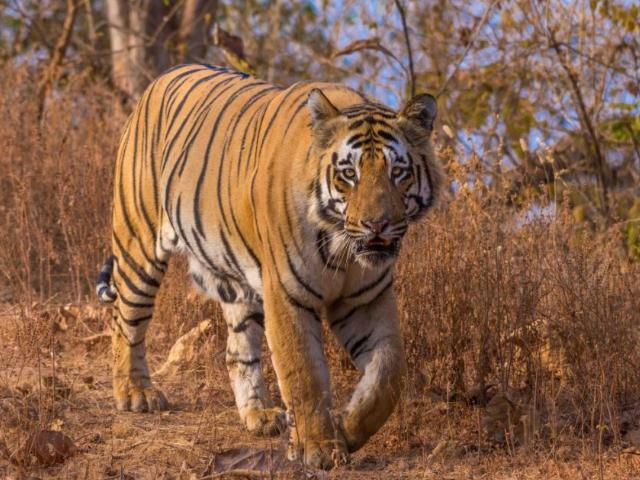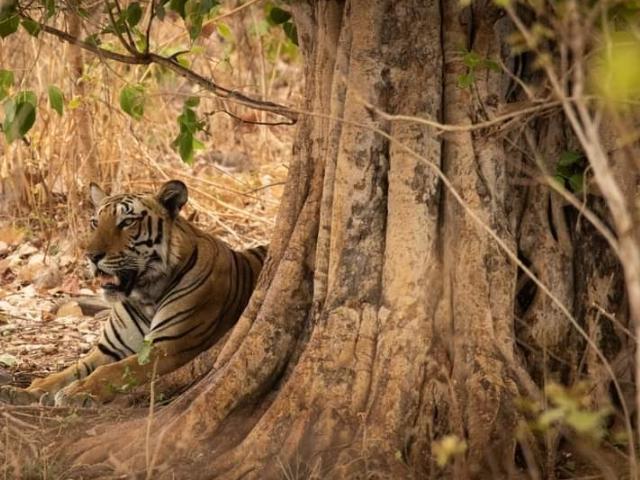Coal Block All Set To Threaten Tiger Corridor
In May this year, the an Odisha based company sought the state forest department’s permission to divert 147 hectares of known tiger habitat, in Yavatmal district’s Pandharkawada forest division, for coal mining in Marki Mangli II coal block ,auctioned off by the Centre in 2020. The jungle patch where the coal blocks are located are identified as part of a tiger corridor connecting some of the best forests of Maharashtra . They include Tadoba-Andhari Tiger Reserve (TTAR) in Chandrapur, Bor Tiger Reserve in Wardha, Tipeshwar Wildlife Sanctuary ,Painganga Wildlife Sanctuary in Yavatmal and the Kawal Tiger Reserve in Telangana. “ This is a part of tiger conservation plan with very heavy presence of the big cats in the corridor as they disperse from one jungle to other”, a senior official said. The Maharashtra government was opposed to the idea when it was auctioned two years ago. Wildlife experts have again red flagged the proposal citing the issue of tiger corridor. Opposing the auction, the state environment minister Aaditya Thackeray, had in August 2020 wrote to the minister for coal and mines, Pralhad Joshi, ‘The Marki-Mangli-II Coal Block auction threatens the wildlife in the region since it falls in the corridor of TATR-Tipeshwar Wildlife Sanctuary.
Also read: Tiger's Epic Walk Raises Serious Environmental Issues
The segment where the mine block is proposed also falls under the area of approved Tiger Conservation Plan (TCP) of Tadoba,’’ Thackeray had said “Our thriving tigers in the region will not only lose their natural habitat but would have to face a massive level of disturbances due to the mining activity and increased presence of humans in the region,” he had underlined .Unfortunately for the tiger, its largest contiguous habitat—Central India—is also where most of India’s coal lies. And it continues to increase its coal production which went up by 33.88 % to 71.3 Million Ton (MT) during May 2022 compared to May 2021, during which 53.25 MT of coal was produced.
Also read: Avni's killing: Core Issue of Tiger Corridors Lost in Oblivion
Contesting Maharashtra’s claim of tiger corridor Yazdani International has however, said that the forest component of the mining lease area “does not fall in wildlife sanctuary, tiger reserve, conservation reserve or eco-sensitive zone. The area does not fall in the 32 tiger corridors identified by NTCA or reflected in the publication of the Wildlife Institute of India (WII) Eastern Vidarbha Landscape. However, the presence of wildlife has been witnessed in some parts of the compartments on the fringe of the mining lease. The presence of wildlife in the project is likely to attract (provisions under) Wildlife Act, 1972 though there is no established corridor. The project will implement sound mitigation measures for the protection of wildlife; the company has been quoted in media reports. But many wildlife experts said the company’s claims were incorrect.
Also read: Rape of a Jungle :Palamu National Park
“The area in question, in Pardi, Swali and Ruikot villages, has a heavy tiger presence,'' said Kishor Rithe, wildlife conservationist and member of the State Board for Wildlife (SBWL). He also said that the famous Tigress T1, or Avni, was a resident of the same forest division. “The Centre’s own rules dictate that tiger corridors are protected with the same stringency as protected areas and the buffer zones around them, and coal mining is not a permissible activity in these buffer zones, '' he underlines.
14 k Trees Ready to be Felled In Another Corridor
Meanwhile, another issue of coal mining in Chandrapur , now a hotbed for man-animal conflict, is in the eye of controversy. This patch of forest land is situated on the south western limits of Tadoba buffer. Pro- green activists urge the government to review a decision to divert 122.58 hectares of reserve forest land for Durgapur Deep Extension open cast mine in the district for coal mining to Western Coalfield Limited (WCL). For a layman’s understating it is as big as 300 football fields .The WCL has already got stage-II clearance for the project under the Forest Conservation Act (FCA), 1980, but as the proposed forest land falls in the corridor and is also part of the tiger conservation plan of Tadoba-Andhari Tiger Reserve (TATR), state board for wildlife (SBWL) member Bandu Dhotre has appealed to PCCF (wildlife) Sunil Limaye to take up the issue with the board. He is member secretary of the Board. Based at Chandrapur, Dhotre, said the project will damage tiger ecology critically as it will involve felling of 14,000 big trees and huge bamboo clusters. “Though the proposed area is 12.25km from the boundary of Tadoba, it is on the northern side of Chandrapur-Mul Road.
Alo read: Kashmir Forests Cry: Give Peace A Chance To Save Markhor
The mining area is just 1.2km from the south-western boundary of Tadoba buffer,” he added. Activists said the proposed forest land is a tiger habitat and falls in the south corridor connecting Chaprala wildlife sanctuary connecting further to Indravati Tiger Reserve in Chattisgarh(Kanha-Navegaon Nagzira-Tadoba-Indravati corridor of MP, Maharashtra Chattisgarh and Andhra Pradesh) . There are at least 25 tigers moving in the 5km periphery of the city, including the proposed mining area,” said Dhotre in communication to Limaye. In the Durgapur coal mining area alone, seven people have died and four injured in man- animal conflict . Activists urge that Chandrapur landscape has seen a shrinking and rising man-animal conflict owing to an increase in tiger.




Comments
Post a Comment